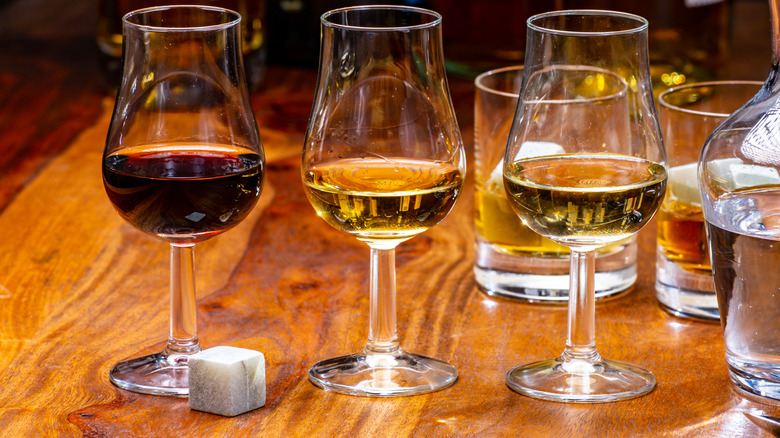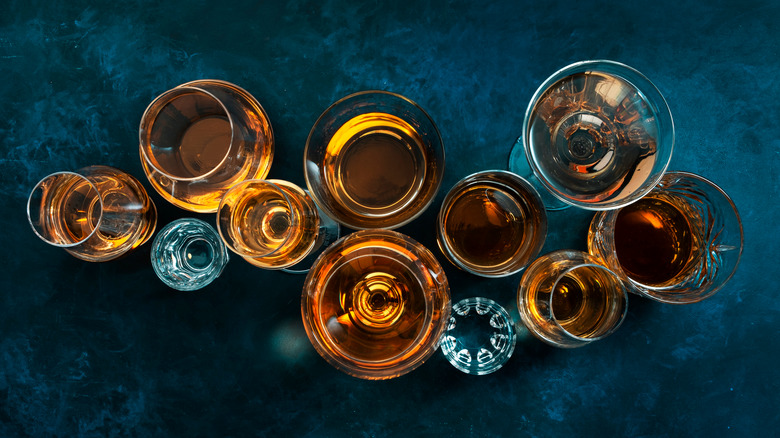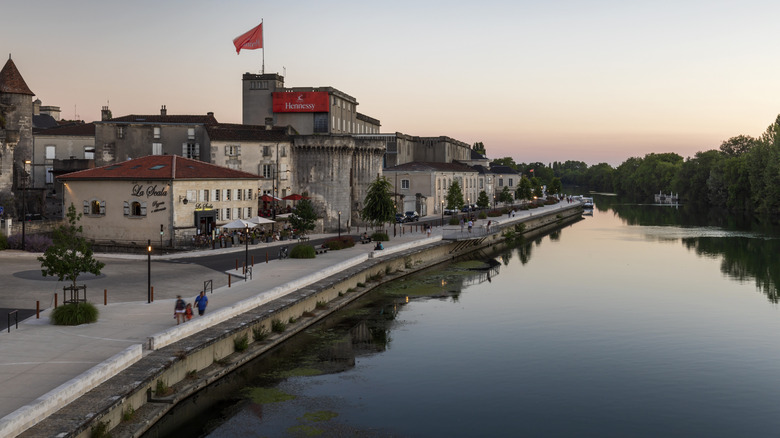What Makes Armagnac And Cognac Different?
Armagnac and Cognac are both properly categorized as brandy, also known as spirits distilled from wine. However, there are distinctions to be made regarding the geography of these two forms of brandy, as well as differences related to terroir, authorized wine grapes, production, and aging. Geography plays a crucial role.
Cognac is a brandy that can only legally be made in the Cognac region of France, situated north of the famed French wine region. Armagnac, on the other hand, is made in a specific appellation d'origine contrôlée (AOC) in France, located in Gascony, which is south of Bordeaux. Moreover, significantly more Cognac than Armagnac is produced annually (about 217 million bottles more, in fact), and it is generally more expensive to purchase.
These essential French spirits do have many similarities, however. In addition to being made from distilled wine grapes such as ugni blanc, both are given extensive aging in oak casks (often sourced from the Limousin region in France) and are notable for their complex flavors. Both are also distilled to a similar alcohol by volume content, generally in the range of 40% to 45% (or 80 to 90 proof).
How Armagnac and Cognac differ
Both Armagnac and Cognac use a cru system (a rating of top vineyard sites) to delineate the best grape-growing areas in their respective regions. In Cognac, Grande Champagne is the premier growing area with the best terroir. What is terroir? It's a French term that encompasses soil, microclimate, and other factors affecting wine grape growth. In Armagnac, Bas Armagnac is the most highly regarded growing area.
The wine grapes are somewhat similar in both regions, but the regulations for using them differ. In Cognac, ugni blanc is the wine grape of choice and must account for at least 90% of the wines used for distillation. Ugni blanc, folle blanche, and colombard are Cognac-approved grape varieties that are also grown in Armagnac, but up to 10 varieties are permissible in total for the latter AOC, with none as primary as ugni blanc is in Cognac.
The regions use different stills and production methods, too. In Cognac, a pot still is preferred (aka a traditional alembic still in which distilling and condensing vessels are connected via a tube), and the brandy is distilled twice. In Armagnac, by contrast, a column still is used for a single distillation.
Both French brandies are cocktail staples. Cognac, for example, is a signature ingredient in classic cocktails like the Sidecar and the Sazerac. Armagnac, meanwhile, is a key ingredient and namesake for the Twist My Armagnac, paired with vodka, pineapple, and lemon juices.
Cognac has the more famous brands
Most Americans probably can't name a single Armagnac brand. In contrast, Cognac boasts some hugely famous brands, including Hennessy, Courvoisier, and Rémy Martin. Hennessy alone sold nearly 8 million cases in 2022, according to Statista, whereas less than an estimated 5 million bottles of Armagnac are sold each year. Not surprisingly, then, Cognac producers drive France's annual $4 billion-plus brandy export market, while Armagnac remains a relatively minor player.
However, this disparity in prestige and sales may slowly change, thanks in part to the 2020 opening of Bhakta Spirits, a U.S.-based company owned by WhistlePig founder Raj Bhakta. The company's vintage and Bhakta 50 Armagnacs are single-year vintages or extensively aged (minimum of 50 years) and sell from several hundred dollars a bottle to several thousand.
The U.S. is one of the largest markets for Armagnac, along with its native France, and European nations like the U.K. and Russia. It's a major market for Cognac, too. Cognac brands sold nearly 115 million bottles in North America in 2022, more than three times the amount sold in Europe, where the spirit is produced.



